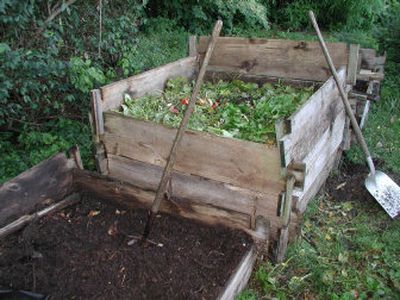Simple compost works well

I get a truckload of small leaves every fall and dig a shallow trench in my garden. I throw in the leaves with a shallow layer of dirt over them. Is this a good way to compost?
Neil Kempen, Spokane
This is a simple way to make compost without the fuss of a formal pile. The idea behind compost making is to get the organic material in contact with microbes that breaks it down. Most compost piles work best with a mix of two parts brown material (like your leaves) and one part green material like fresh grass clippings or leaves chopped fine and mixed together with water. This gives the microbes the best mix to do their work.
Because you used a thin layer of leaves and covered them with soil, you are still getting the microbes in close contact with the leaves. If you had used a thick layer of leaves with nothing added, the microbes wouldn’t have had the right conditions and the pile would have turned into a soggy mess by spring.
Propagating plants
What does “clonally” mean when propagating plants?
Marie Mann, Spokane
The term “clone” is the scientific term that refers to copying the genetic code of a plant (or animal) and creating new plants that are exactly like the parent plant. Any time you take a leaf from a plant and start a new plant, you are cloning the parent plant. The technique has been used for centuries to start new plants so it isn’t a new concept.
What is new, however, is the cloning techniques that have become available in the last 20 years. Scientists are now able to take very small pieces or groups of cells from certain types of plant tissue and grow them in special containers with special blends of nutrients, sugars, vitamins and hormones. The nutrients cause the bits of plants to begin to grow new plants very rapidly. Eventually the new plants are big enough to plant into the more familiar pots and soils, where they finish growing up.
Using this method, commercial propagators can take a few chrysanthemum cells, and produce more than a million new plantlets the next year. The new method allows growers to bring new plants to market much faster than the traditional methods of growing plants from seed or cuttings that we are used to.